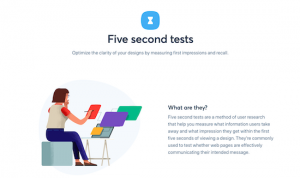We’re wrapping up 2020 and on the cusp of 2021. Many companies are still navigating the COVID-19 pandemic. Looking back over the past year it’s eye-opening to see how companies have adjusted. And yes, the word “adjusted” is being used loosely. What I mean is that some companies prospered, others are barely hanging on and then there are those that were less fortunate. Those less fortunate being those that are either still closed (due to government mandates), filed for bankruptcy or having closed their doors for good. But while this is industry specific, many companies on this spectrum have still mustered the ability to support the communities where they do business. Yes, even those that are still recovering. How you ask? Well, to say this bluntly, not easily, but certainly with fewer resources. They’ve just become more crafty and creative in how they do so. And here’s the good news. It doesn’t matter what you’re working with financially, you too can support the communities where you do business on a shoestring budget. I’m going to tell you how.

ElisaRiva / Pixabay
Re-imagine volunteerism.
Businesses should begin by unlearning the narrow idea of what volunteering as an action-oriented behavior traditionally entails. To re-imagine employee volunteerism think more purposeful about how employees can serve as volunteers beyond the obvious. Here’s what I suggest. Broaden your “definition” or idea of what you consider business-led volunteerism. Here’s what I mean. Too often is the idea of volunteering envisioned as a group of employees in a room, assembling a tangible item for three hours that’ll then be donated to a non-profit. You should broaden your outlook. For example, what some non-profit organizations need most immediately is money. Why? Because most non-profits don’t have more than 60 to 90 days of cash reserves. When times get tight like they are now, more non-profits than ever before may have to close their doors, potentially leaving a void in the social-net supporting communities in need.
And while fundraising isn’t an immediate “go to” activity for companies seeking to volunteer, gaining money for a non-profit’s operating expenses is probably the most vital task at the moment (even if the funds raised isn’t earmarked for a specific program). Here’s why. It’s estimated 30-40 percent of all non-profit organizations may close doors for good and never recover from the economic downturn. What’s needed now more than ever is cash to operate. Period.
You may also choose to include virtual and remote forms of volunteering. Just be sensitive and understand many non-profits may not need (or offer) this. Unbeknownst to most of society, many non-profit organizations simply cannot support mass virtual volunteerism simply because of their unique service or product delivery model. So, while individual and discipline specific opportunities may present themselves, be careful to not pitch skills-based or pro-bono projects they’ve not asked for. Doing so may inadvertently create a situation where they’re catering to your needs over theirs.
So, knowing this, it might be in best interest to support fundraisers or programs already being hosted by the non-profit that employees can support virtually, remotely or within their respective networks. Employees can get crafty in how they support this endeavor. If this requires a peer-to-peer fundraising component, perhaps the time the employees spend hustling and soliciting their networks and the general public are counted towards company-led volunteerism. If there’s gamification involved, the time actually driving monetary donations is also counted. Or if your company is hosting a company-wide fundraiser virtually, perhaps your employees who spent time creating the landing page, monitoring activity, maintaining communication and engagement can count as volunteerism.

stux / Pixabay
Add virtual “lunch & learns” and happy hours to your list.
You may be asking, what does sitting around and learning from a non-profit about their mission and services have to do with volunteerism? Well, I’ll tell you. Many small and mid-sized non-profits and NGOs simply just need more people to know they exist. That’s it. You may be surprised to know that many non-profits actively host public and privately scheduled campus tours. Why? To create an environment where they gain newcomers in a space to tell them more about their mission, history, services, show their operations and introduce them to team members in hopes to convert those on the tour from potential to active volunteers and donors.
That said, in this age of social-distancing while it may not be advisable to participate in an in-person tour, perhaps your community partner is available to host an interactive “lunch & learn” or happy hour by which your employees could register for the activity. It can be fun and informative. For the “lunch & learn” think about allowing this during company hours and count the time the employee is being educated by your non-profit partner as volunteer time. For the happy hour, perhaps you allow employees off an hour early and schedule this as an optional event during normally prescriptive happy hour times. While it’s not creating a tangible item, you’re lending your employees’ time to support your community-based partner by becoming better educated about the critical issue, and perhaps eventually taking an interest in this same organization. It’s that simple. And the icing on the cake is that this fun and interactive learning experience can connect those same employees to your company culture because they’ll have a better sense of what the company cares about.
To me, any time spent by employees to support a formal organization should be considered volunteerism. And yes, this includes being educated by non-profit partners about a critical issue your company can work to solve, or even by building virtual and remote-based mechanisms to support fundraising efforts. If it’s by employees, company-led and approved and for an organization deemed appropriate by the company, what’s the argument for not counting this? I don’t see the down side. But beyond giving time, what more can you do? Well, I suggest you turn to product you may have too much of.

icondigital / Pixabay
Lean on surplus product and material.
In-kind donations have a special place in supporting many community-based non-profits. Sure, it’s not as universally valued or liquid as financial capital and doesn’t build capacity like human capital (i.e. volunteering your time and skills), but it can still satisfy the needs of many organizations. Just one word of caution. Do not, I repeat, do not assume every organization needs your unused material, many may not, but some certainly will. I share that just to say that too often do companies assume that non-profits will just take whatever is being given. And that’s hardly the case. In instances where surplus product is forcefully donated to a community-based non-profit and it can’t be used, that non-profit is then burdened with finding a new home for those items. That costs that organization valuable time and money by staff that frankly have other more important tasks to fulfill. The alternative is simply tossing it in the trash.
Here’s what do to instead. Work very intently to align your surplus goods and services with organizations that absolutely need it. For example, if your company is in a food-based service, perhaps you donate items to food-based community partners like food pantries, distribution centers or food banks. Or if you have specific hygienic or household goods, check in with your local homeless shelter or community center that serves those living in poverty. Or maybe during this great time of need your company has a lot of physical space no longer being used. Maybe the physical space can be donated to a community-based non-profit that just needs more space for hosting events during a time where they’re fully operational but are social-distancing. The bottom line is this, many non-profit organizations that accept in-kind donations have a “wish list” on their website. Check there before you call the non-profit directly to offer your product or material.

PhotoMIX-Company / Pixabay
Give exposure to community-based non-profits.
One of the most effective actions you can take is to simply give more exposure and visibility to your community-based partners. The National Center for Charitable Statistics estimates there being more than 1.5 million tax exempt organizations registered with the Internal Revenue Service in the United States alone. With so many non-profits across America (some with redundant or duplicative missions) each of them are fighting for the same volunteers and donations, both monetary and in-kind. So, give them a lift up and offer them exposure.
Remember, it doesn’t have to be an expensive 30 second paid television advertisement. While you may choose to sponsor that, I suspect if you’re reading this you don’t have a large budget. The good news is there are thriftier yet very effective ways to give visibility. Here are some things to think about.
Create a regular cadence of internal newsletters that communicate to your employees who your community-based partners are, what they need and how they can best be supported. But you don’t have to stop there. If you believe you have a significant following of customers who also align with the organizations you support, think about creating avenues that connect your customers with your community-based partners. This might be something as simple as an “opt-in” donation that’s taken at the cash register (or through an online checkout). Or maybe it’s a more complex mechanism where reward members are able to donate their points, or round up their purchase so that the extra cents are donated. You may even choose to work to more deliberately to share about the mission and long-standing relationships with your community-based partner in your subscription newsletters to customers.
Lastly, you can always take advantage of low-cost avenues like social media. If you have a strong following through Twitter, Facebook, Instagram or other channels, take advantage of this. Be vocal about sharing what your community partners are up to. If they need more support, elevate their voice through your following. They’ll be grateful, and this will add to their ability to convert new supporters.
At the end of the day you can still do good for those who need it, even with less resources. It just may take a little more effort and a creative spirit. But during this great time of need it may be more necessary than ever before.
Business & Finance Articles on Business 2 Community
(9)









